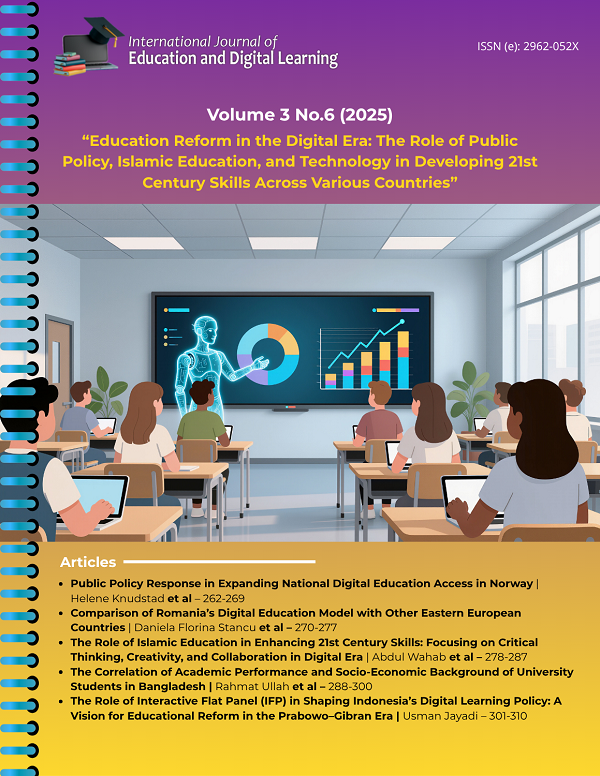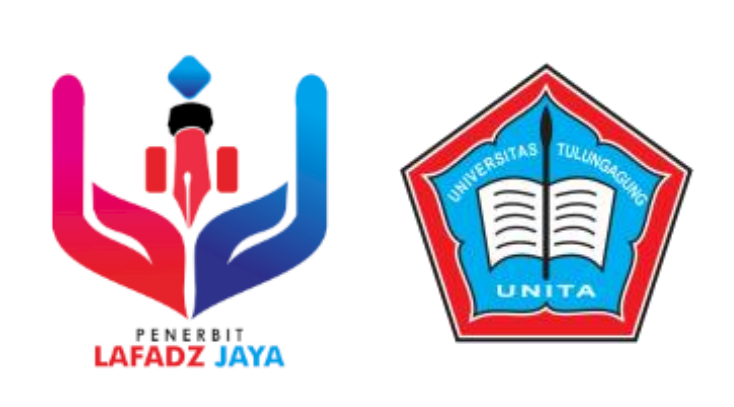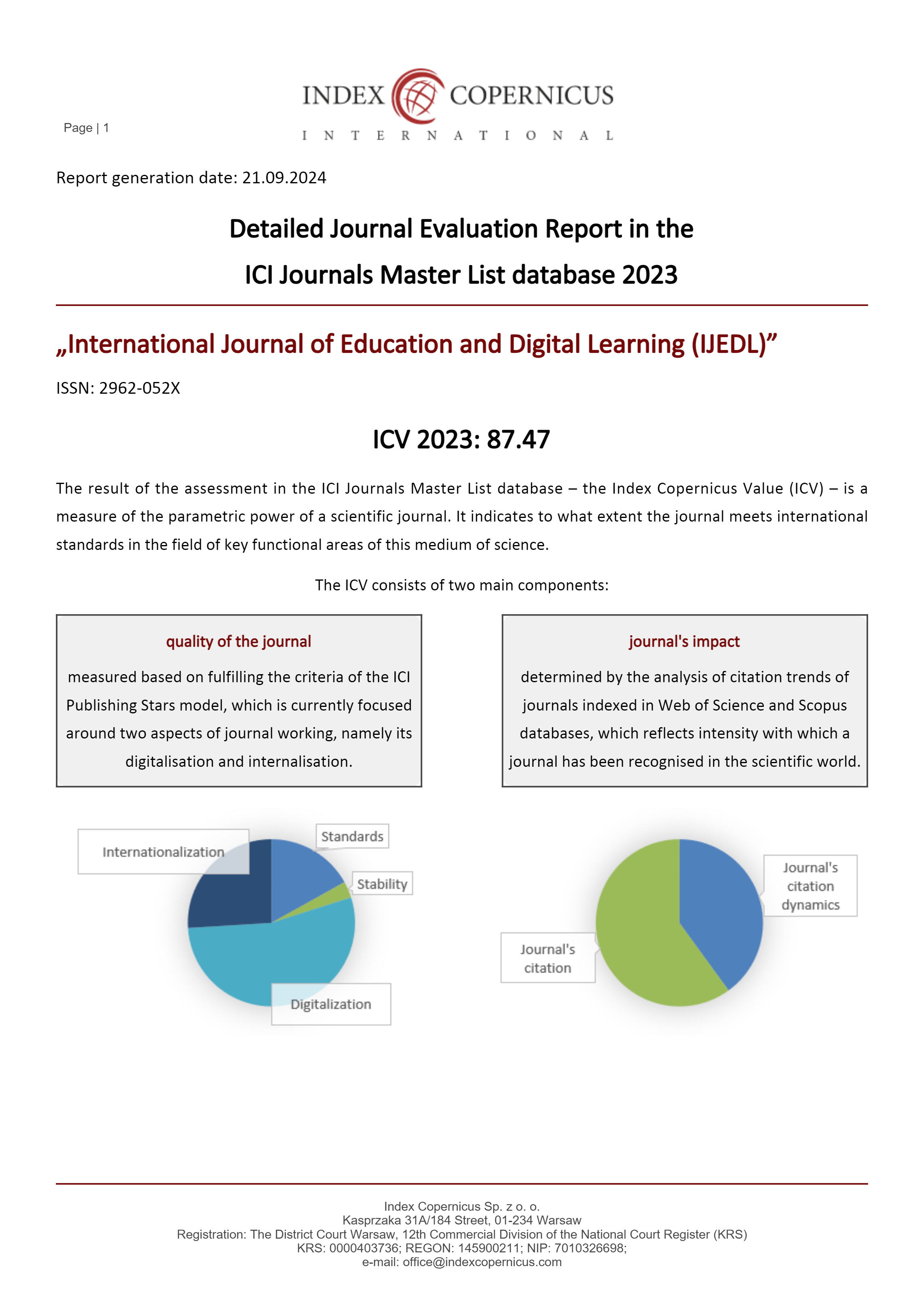The Role of Interactive Flat Panel (IFP) in Shaping Indonesia’s Digital Learning Policy: A Vision for Educational Reform in the Prabowo–Gibran Era
DOI:
https://doi.org/10.47353/ijedl.v3i6.354Keywords:
Interactive Flat Panel (IFP), Digital Learning, Education Policy, Prabowo–Gibran Administration, Smart Classroom, Digital Sovereignty, Education 5.0Abstract
This study explores the role of Interactive Flat Panels (IFPs) as transformative digital learning media in shaping Indonesia’s educational reform under the Prabowo–Gibran administration (2024–2029). The research employs a descriptive qualitative approach, synthesizing scholarly literature and education policy analyses to conceptualize how IFP integration supports national digital education goals. Globally, IFPs have been proven to enhance student engagement, learning outcomes, and teacher performance through interactive, multimedia-based instruction. Within the Indonesian context, their adoption aligns with the Merdeka Belajar and Smart Schools Indonesia initiatives, which emphasize technological equity, digital sovereignty, and 21st-century learning competencies. The findings indicate that IFPs can foster interactive and collaborative learning environments, strengthen teachers’ digital competencies, and facilitate Education 5.0 implementation nationwide. However, several barriers persist, including infrastructure inequality, limited teacher readiness, and financial constraints in public schools. Addressing these challenges requires multi-sectoral collaboration, capacity-building programs, and localized production strategies to ensure sustainability and affordability. The study concludes that IFPs are not merely instructional technologies but strategic policy instruments driving Indonesia’s digital transformation in education. Their effective integration can bridge pedagogical and technological divides, positioning Indonesia as a leader in digital learning innovation across Southeast Asia.
Downloads
References
Al-Sindi, M., Putra, F., & Al-Mohammed, R. (2023). Integrating technology into classroom training for interactive learning. Journal of Educational Technology and Pedagogy.
Anderson, T., & Dron, J. (2011). Three generations of distance education pedagogy. International Review of Research in Open and Distance Learning, 12(3), 80–97. https://doi.org/10.19173/irrodl.v12i3.890
Berezina, E., & Alexandrova, A. (2021). The use of interactive panels in the classroom and health of students. Journal of Education and Health Research.
Chien, Y.-H. (2024). Heuristic evaluation of interactive flat panels for interactive teaching. Usability and User Experience. https://doi.org/10.54941/ahfe1005422
Choiriyah, N. (2023). Evaluating digital learning application in university learning environments. International Journal of Digital Learning.
Choirudin, A., & Lubis, R. (2025). Enhancing high school students’ mathematical communication through interactive learning media. Journal of Education and Innovation.
Clark, R. C., & Mayer, R. E. (2016). E-learning and the science of instruction (4th ed.). Hoboken, NJ: Wiley.
Darmawan, I., Heriyawati, D. F., Mustofa, M., Galuh, M., & Romadhon, E. (2024). Flipbook as a learning medium: A study on Indonesian ESP students. Voices of English Language Education Society.
Dewey, J. (1938). Experience and education. New York: Macmillan.
Garrison, D. R., & Anderson, T. (2003). E-learning in the 21st century: A framework for research and practice. London: RoutledgeFalmer.
Hakim, M. F. A. (2022). Tantangan dan solusi pembelajaran online berbasis digital pada masa pandemi COVID-19. Tarikhuna: Journal of History and History Education.
Johnson, L., Becker, S. A., Estrada, V., & Freeman, A. (2014). The NMC Horizon Report: 2014 Higher Education Edition. Austin, Texas: The New Media Consortium.
Kasa, V., Phani Kumari, S., & Naathi, N. B. (2024). How IFP, interactive tabs, and AI affect the achievement in rural East Godavari district secondary schools – A study. Proceedings of the 2nd DMIHER International Conference on AI in Healthcare, Education, and Industry (IDICAIEI). https://doi.org/10.1109/IDICAIEI61867.2024.10842817
Lazuardi, A., & Syaheed, M. (2024). Enhancing Arabic language proficiency through interactive learning programs. Lahjatuna: Jurnal Pendidikan Bahasa Arab. https://doi.org/10.38073/lahjatuna.v4i2.2584
Lenni, S., & Rohman, R. (2025). Revolutionizing learning engagement through augmented reality in Indonesian classrooms. Journal of Innovation and Research in Primary Education.
Mishra, P., & Koehler, M. J. (2006). Technological pedagogical content knowledge: A framework for teacher knowledge. Teachers College Record, 108(6), 1017–1054.
Muhdi, M., Achmad, B., Arif, W., & Yuliejantiningsih, Y. (2019). Whiteboard animation media development with smart pedagogy approach in educational policy courses. Proceedings of the 1st International Conference on Education and Social Science Research (ICESRE). https://doi.org/10.2991/icesre-18.2019.59
OECD. (2020). Digital education outlook 2020: Shaping policy for the future. Paris: OECD Publishing. https://doi.org/10.1787/26186126
Purniningtyas, A., Fauziati, E., & Rochsantiningsih, D. (2024). Enhancing classroom management self-efficacy through teacher professional education program. Voices of English Language Education Society.
Reynol, M., Malabar, S., & Masie, S. R. (2025). Challenges and strategies in developing differentiated learning-based Indonesian language teaching modules. World Journal of Advanced Research and Reviews. https://doi.org/10.30574/wjarr.2025.25.2.0599
Santika, D., & Mushlihuddin, I. (2025). Penerapan media pembelajaran interaktif Lumi Education untuk meningkatkan hasil belajar siswa pada pelajaran pendidikan Pancasila. ALSYS Journal. https://doi.org/10.58578/alsys.v5i3.5752
Setiawati, N., & Setyarini, I. (2020). Promoting EFL young learners’ higher order thinking skills through digital storytelling. Indonesian Journal of Language Teaching and Linguistics.
Siemens, G. (2005). Connectivism: A learning theory for the digital age. International Journal of Instructional Technology and Distance Learning, 2(1), 3–10.
Subiyantoro, B., & Musa, H. (2024). Preparing Indonesian primary school teachers for deep learning integration. Journal of Teacher Education and Research.
Suseno, G., Hendarti, T., & Ramadani, S. P. (2024). The role of distance learning in shaping Indonesia’s golden generation: Student interaction, engagement, and satisfaction. Journal of Education and Teaching Learning (JETL). https://doi.org/10.51178/jetl.v6i3.2076
Suwandi, R., Putri, R., & Utaminingsih, S. (2024). Analysis of learning models in secondary schools to improve the quality of student education. Academy of Social Science and Global Citizenship Journal. https://doi.org/10.47200/aossagcj.v4i2.2682
UNESCO. (2023). Technology in education: A tool on whose terms? Global Education Monitoring Report. Paris: UNESCO Publishing.
Vygotsky, L. S. (1978). Mind in society: The development of higher psychological processes. Cambridge, MA: Harvard University Press.
Wahyuni, N., & Marlina, M. (2018). Pengembangan multimedia interaktif pembelajaran desain panel. Journal of Vocational Education Studies.
World Bank. (2021). Learning recovery to acceleration: A global update on education policy. Washington, DC: World Bank Publications.
Zhao, Y. (2021). Build back better: How (and why) the future of education must change. Teachers College Press.
Downloads
Published
How to Cite
Issue
Section
License
Copyright (c) 2025 Usman Jayadi

This work is licensed under a Creative Commons Attribution 4.0 International License.













